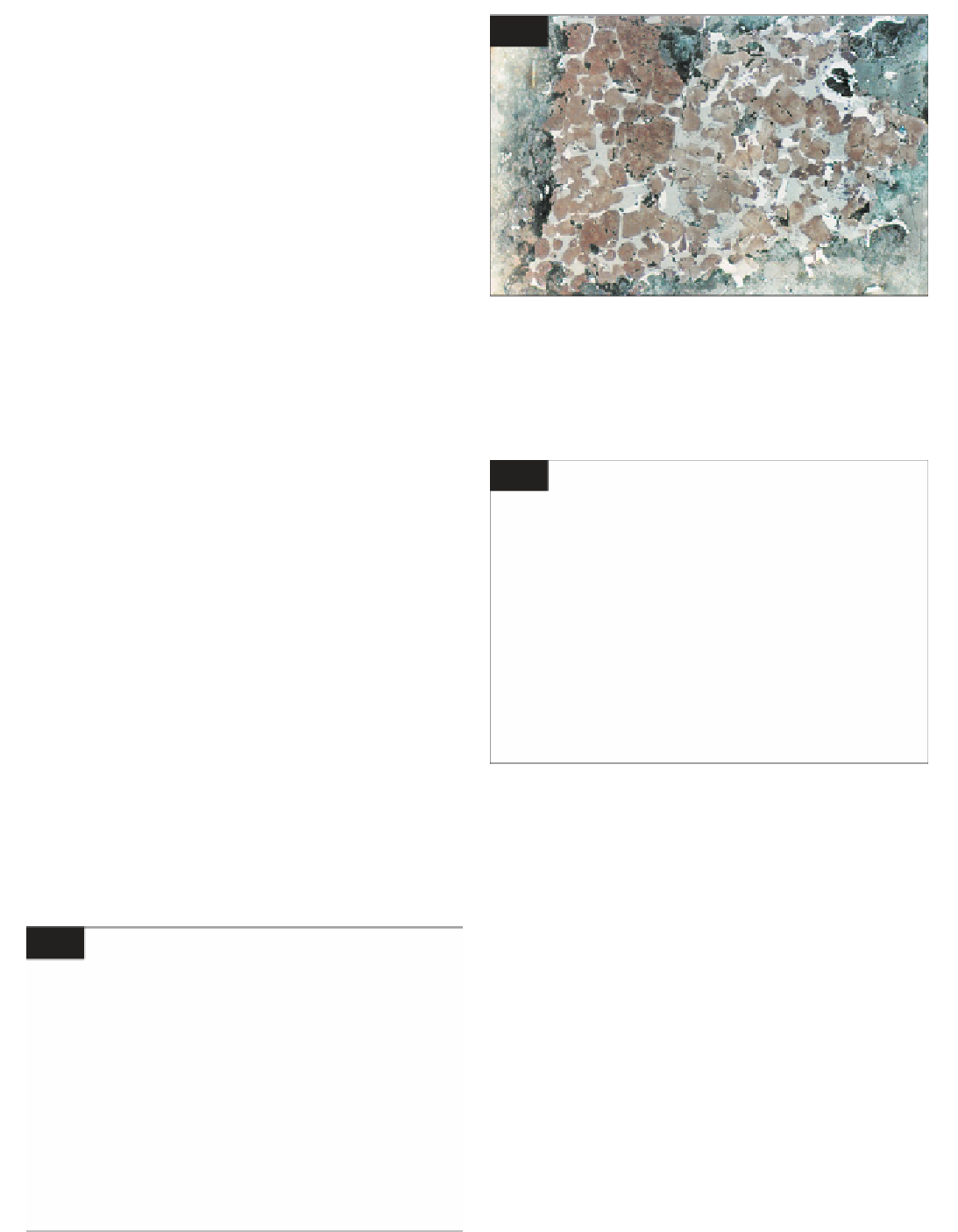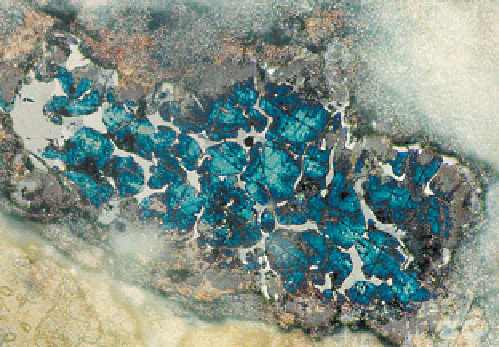Geoscience Reference
In-Depth Information
168
a higher proportion of the brown-coloured C
4
AF
interstitial phase than normal Portland cement. However,
thin section examination alone is not a reliable indicator
of the use of SRPC, it must be confirmed by reflected
light examination of a highly polished and etched
specimen. The method is described in BS 1881: Part 124
(British Standard Institution, 1988) and by Grove (1968).
For reflected light examination of cements, the choice of
etchant reflects the constituent to be identified and a
range of appropriate etching techniques are described in
Appendix B. For differentiating between normal and
sulfate-resisting Portland cements the two most useful
etching methods are those that use either HF vapour or
10% KOH solution. These two different etching
techniques produce the following colours that are seen in
reflected light:
Clinker phase
168
Unhydrated Portland cement clinker after etching
with HF vapour. C
3
S is brown, C
2
S is blue (very little
in this example), the interstitial matrix is differentiated
into C
3
A (light grey) and C
4
AF (white); PPR, ×300.
(Courtesy of Barry J Hunt.)
HF vapour
10% KOH
C
3
S (alite)
Brown
Does not etch
C
2
S (belite)
Blue
Does not etch
169
C
3
A (aluminate)
Light grey
Bluish grey
C
4
AF (ferrite)
White
White
The method for distinguishing between SRPC and normal
Portland cement is based on the ratio of C
3
A to C
4
AF in the
interstitial phases of residual cement clinker grains. For
normal Portland cement the ratio does not usually exceed
1:2 (aluminate:ferrite) and in contrast the ratio is typically
more than 1:5 for SRPC. A least 20 residual cement grains
>20 μm in size should be examined for each concrete or
cement sample. Figures
168-170
show residual cement
grains within concrete polished specimens that have all
been etched with HF vapour for 2-5 seconds. Figure
168
169
Unhydrated Portland cement clinker after etching
with HF vapour. C
2
S is blue and exhibits lamellar
twinning, C
3
S is brown. The interstitial matrix is
differentiated into C
3
A (light grey) and C
4
AF (white);
PPR, ×300. (Courtesy of Barry J Hunt.)
170
170
Unhydrated sulfate-resisting Portland cement
clinker after etching with HF vapour (centre). C
3
S is
brown, C
2
S is blue (very few in this example), the
interstitial phases consist almost entirely of C
4
AF
(white); PPR, ×300. (Courtesy of Barry J Hunt.)





